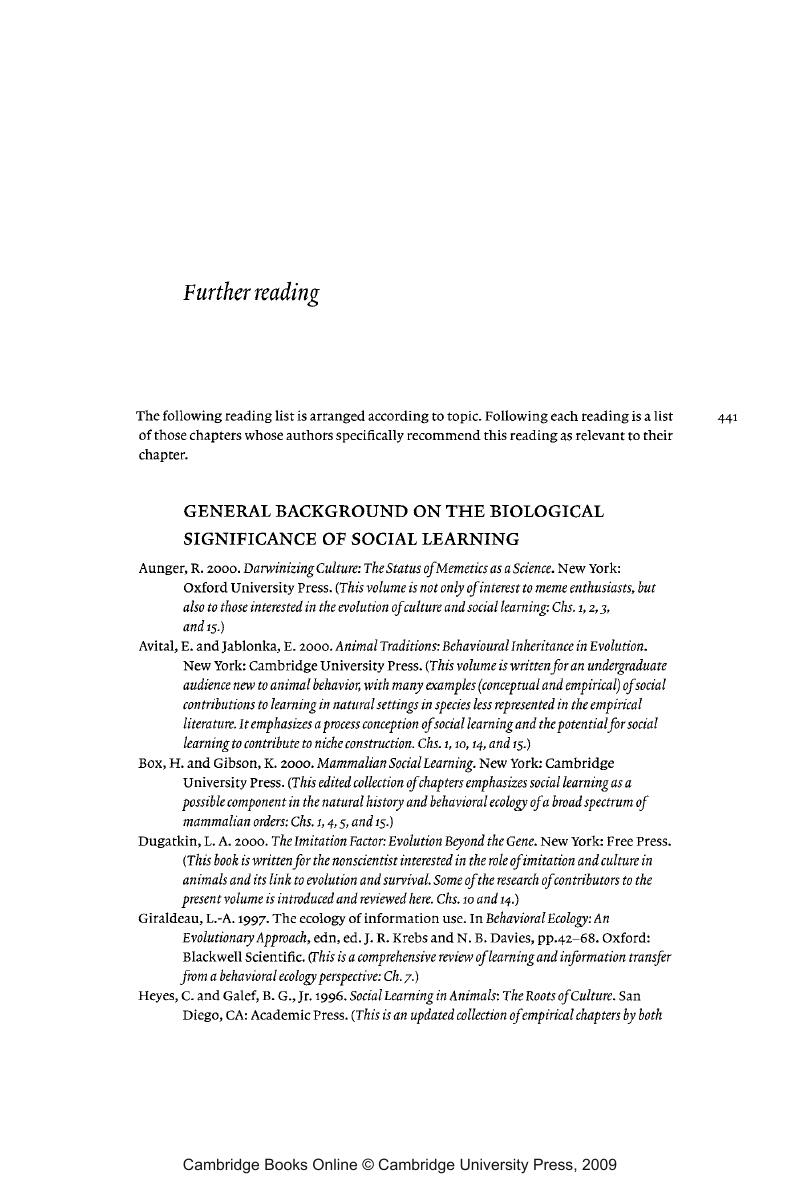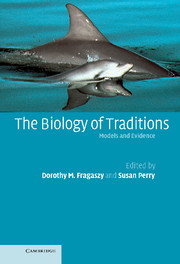Book contents
- Frontmatter
- Contents
- List of contributors
- Preface
- Acknowledgements
- 1 Towards a biology of traditions
- 2 What the models say about social learning
- 3 Relative brain size and the distribution of innovation and social learning across the nonhuman primates
- 4 Social learning about food in birds
- 5 The cue reliability approach to social transmission: designing tests for adaptive traditions
- 6 “Traditional” foraging behaviors of brown and black rats (Rattus norvegicus and Rattus rattus)
- 7 Food for thought: social learning about food in feeding capuchin monkeys
- 8 Traditions in mammalian and avian vocal communication
- 9 Like mother, like calf: the ontogeny of foraging traditions in wild Indian Ocean bottlenose dolphins (Tursiops sp.)
- 10 Biological and ecological foundations of primate behavioral tradition
- 11 Local traditions in orangutans and chimpanzees: social learning and social tolerance
- 12 Developmental perspectives on great ape traditions
- 13 Do brown capuchins socially learn foraging skills?
- 14 Traditions in wild white-faced capuchin monkeys
- 15 Conclusions and research agendas
- Further reading
- Index
- References
Further reading
Published online by Cambridge University Press: 27 October 2009
- Frontmatter
- Contents
- List of contributors
- Preface
- Acknowledgements
- 1 Towards a biology of traditions
- 2 What the models say about social learning
- 3 Relative brain size and the distribution of innovation and social learning across the nonhuman primates
- 4 Social learning about food in birds
- 5 The cue reliability approach to social transmission: designing tests for adaptive traditions
- 6 “Traditional” foraging behaviors of brown and black rats (Rattus norvegicus and Rattus rattus)
- 7 Food for thought: social learning about food in feeding capuchin monkeys
- 8 Traditions in mammalian and avian vocal communication
- 9 Like mother, like calf: the ontogeny of foraging traditions in wild Indian Ocean bottlenose dolphins (Tursiops sp.)
- 10 Biological and ecological foundations of primate behavioral tradition
- 11 Local traditions in orangutans and chimpanzees: social learning and social tolerance
- 12 Developmental perspectives on great ape traditions
- 13 Do brown capuchins socially learn foraging skills?
- 14 Traditions in wild white-faced capuchin monkeys
- 15 Conclusions and research agendas
- Further reading
- Index
- References
Summary

- Type
- Chapter
- Information
- The Biology of TraditionsModels and Evidence, pp. 441 - 444Publisher: Cambridge University PressPrint publication year: 2003

